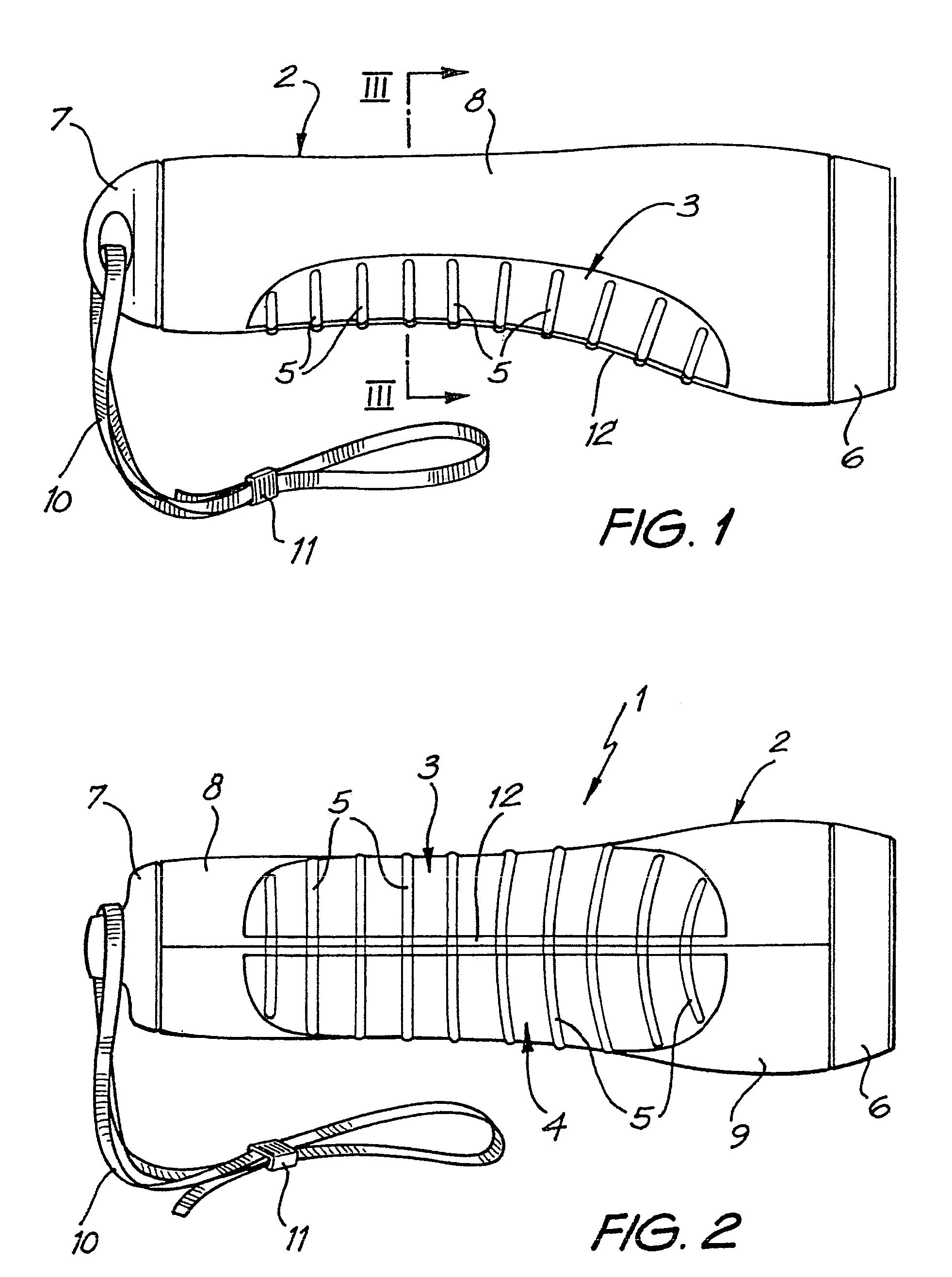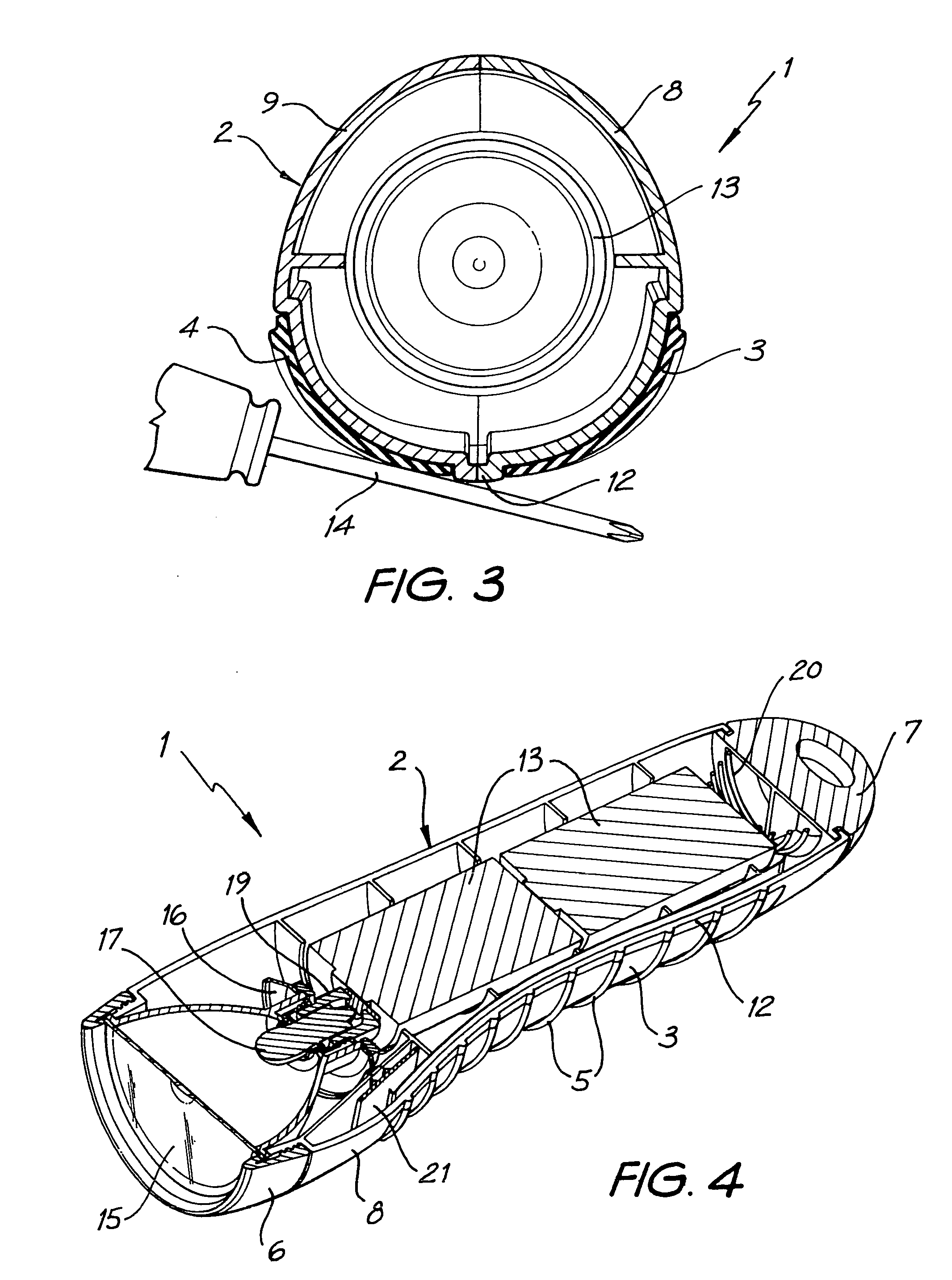Touch sensitive flashlight
a flashlight and touch technology, applied in the field of touch sensitive flashlights, can solve the problems of exacerbated problem, large number of open circuit nodes of touch sensitive switches described above, and awkward use of the above-mentioned prior art flashlights
- Summary
- Abstract
- Description
- Claims
- Application Information
AI Technical Summary
Benefits of technology
Problems solved by technology
Method used
Image
Examples
Embodiment Construction
[0063]Referring to the figures, the preferred embodiment of the present invention is depicted in flashlight 1, which comprises non-conductive housing 2, batteries 13, light bulb 17, and first and second nodes 3 and 4. Non-conductive housing 2 provides the body of flashlight 1 and comprises lens ring 6, first and second side portions 8 and 9, rib 12, and end cap 7. First and second nodes 3 and 4 are disposed adjacent to and on either side of rib 12. When first and second nodes 3 and 4 are electrically bridged, electric current is allowed to flow from batteries 13 through light bulb 17, thereby activating flashlight 1. In use, first and second nodes 3 and 4 are electrically bridged by a user's hand when the user grasps flashlight 1. The protrusion provided by Rib 12 minimizes inadvertent activation of flashlight 1 by preventing linear portions of conductive objects like screwdrivers and the like from simultaneously contacting both first and second nodes 3 and 4.
[0064]First and second ...
PUM
 Login to View More
Login to View More Abstract
Description
Claims
Application Information
 Login to View More
Login to View More - R&D
- Intellectual Property
- Life Sciences
- Materials
- Tech Scout
- Unparalleled Data Quality
- Higher Quality Content
- 60% Fewer Hallucinations
Browse by: Latest US Patents, China's latest patents, Technical Efficacy Thesaurus, Application Domain, Technology Topic, Popular Technical Reports.
© 2025 PatSnap. All rights reserved.Legal|Privacy policy|Modern Slavery Act Transparency Statement|Sitemap|About US| Contact US: help@patsnap.com



